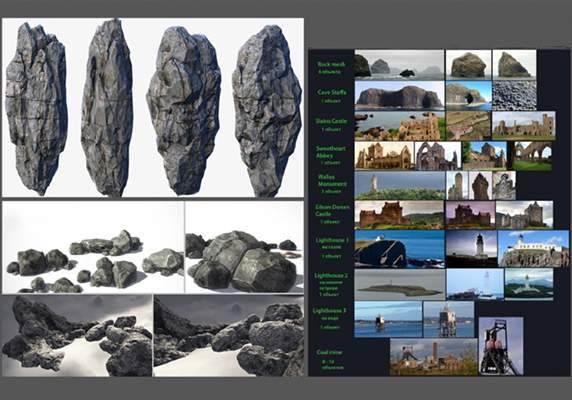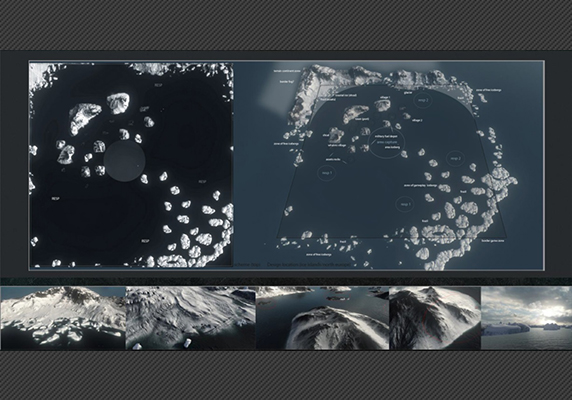The process of creating game locations is divided into two main stages: setup and development. Each of the respective stages may be divided into a number of basic steps.
Setup
At this stage Wargaming team conceptualizes the new map.
Game Design
Game Design Department gives birth to a new map by forming its technical background: geometry, landmarks and unique features. It’s the skeleton of the future map showing its structure and key entities: straits and islands, elevations and sandbanks, plus interactive elements with unique gameplay functions (hide-outs and bases).
At this stage game designers determine the requirements for the map and decide what emotions it should arouse in players. Coming back to a certain location again and again, players should get unique gaming experience and versatile tactical opportunities.
Setting
The high seas of World of Warships are divided into 16 geographic regions each with their own distinctive landscape features. A choice of setting usually comes down to the selection of one of these regions based on the requirements game designers have for the map.
Sea is the main battle stage, but to liven up the slightly monotonous sea view, land elements (coastlines, islands, sand bars, etc.) are incorporated to enhance player experience and a specific atmosphere.
Concept Art
After the setting is chosen, an artist meticulously studies its layout, defines characteristics and geometry of the landscape (the latter majorly influencing the game design and gameplay). With all this information in hand, the artist applies his creativity and imagination to create concept art utilizing his own sketches and photographs as references for the actual landscape.
Content Map
The next step is to maximize the number of details in the concept art. Designers choose the landscape elements required, decide on the quantity of each element, and create the content map that will give the visual idea of the final appearance of the location.

Depending on the actual climate of a chosen setting, the number of the elements (stones, rocks, trees) varies greatly and the set of textures is unique for every map.

Map Development
At this stage the concept, ideas, and sketches of the previous stage are implemented by the developers.

Detailing the Geometry of Landscape
In game development, they call this step ‘High-Poly modeling’. During High-Poly developers use software that enables them to generate and detail the surface of the landscape, helping to reach high-quality result. If needed, artists polish the delivered geometry using Zbrush and Mudbox tools.

Texturing
This step defines the color component of the locations and helps to reach the desired degree of realism using the masks taken from the height map. It may be rocky surface, sand, green zones, snow slopes, erosions, or other elements relevant to the setting chosen.
At the end of this stage, the smallest textures (grass, sand, soil, texture of stones) are added.

Adding Props
The map is almost ready. All that’s left is to add some diversity to the location by filling the in-game world with natural elements and structures people in gamedev call ‘props’. Level designers use geographic references to liven up the map: add fences, plant trees, scatter stones and erect buildings. Only the biggest and the most noticeable objects are considered for production. Various smaller objects are grouped into whole new structures that are clearly visible in the background of the huge warships.
Special Effects and Polishing
As the final step, the map is transferred straight into the hands of developers. Based on this information they go to work, setting up realistic water movement, adding sound and lighting effects, as well as incorporating special effects and interactive elements.
